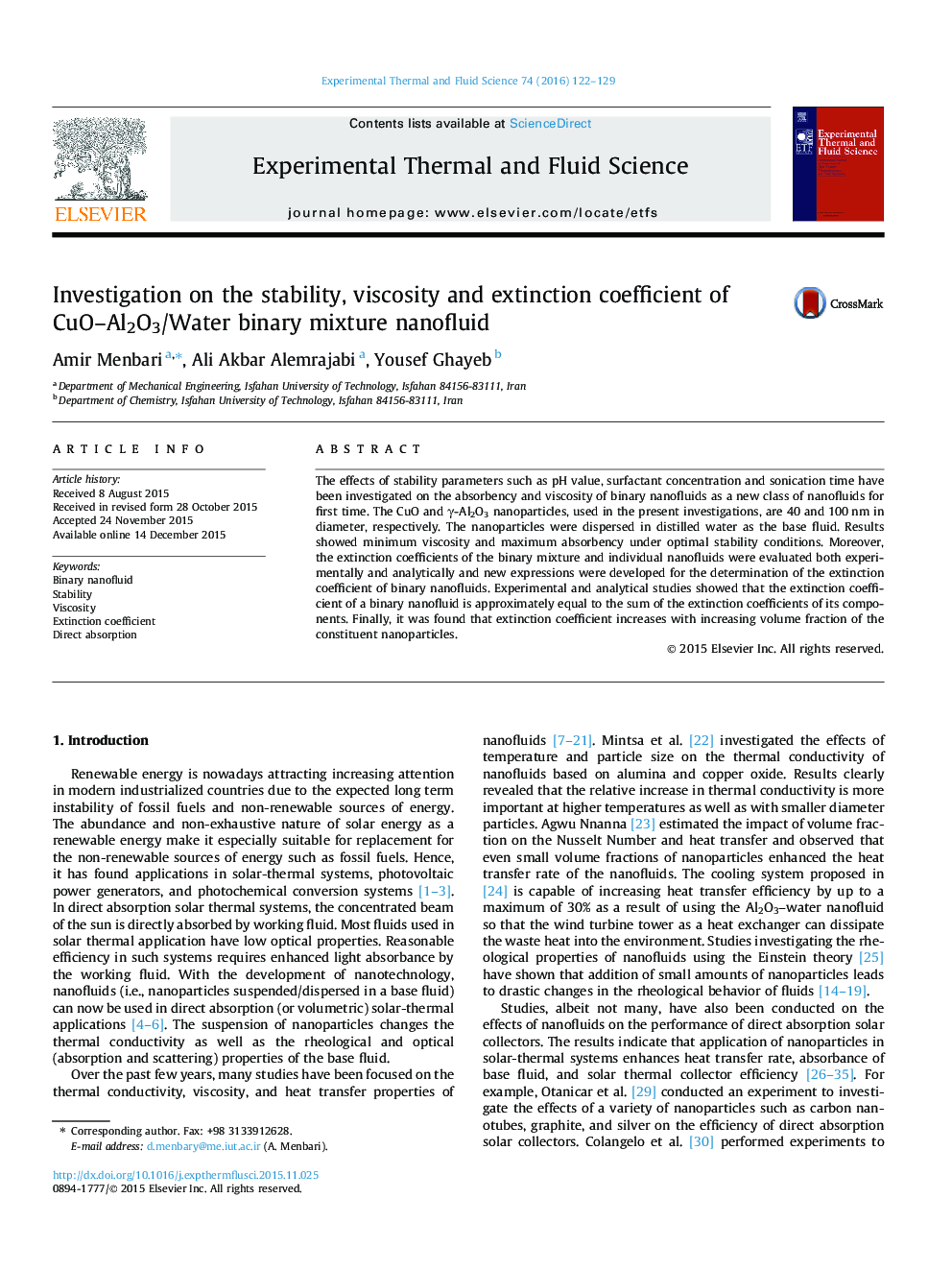| Article ID | Journal | Published Year | Pages | File Type |
|---|---|---|---|---|
| 651191 | Experimental Thermal and Fluid Science | 2016 | 8 Pages |
•The important investigations are performed on the stability of binary nanofluids.•At optimal stability condition the properties of binary nanofluids are optimum.•The extinction coefficient are investigated experimentally and analytically.•New expressions are presented to calculate the extinction coefficient.
The effects of stability parameters such as pH value, surfactant concentration and sonication time have been investigated on the absorbency and viscosity of binary nanofluids as a new class of nanofluids for first time. The CuO and γ-Al2O3 nanoparticles, used in the present investigations, are 40 and 100 nm in diameter, respectively. The nanoparticles were dispersed in distilled water as the base fluid. Results showed minimum viscosity and maximum absorbency under optimal stability conditions. Moreover, the extinction coefficients of the binary mixture and individual nanofluids were evaluated both experimentally and analytically and new expressions were developed for the determination of the extinction coefficient of binary nanofluids. Experimental and analytical studies showed that the extinction coefficient of a binary nanofluid is approximately equal to the sum of the extinction coefficients of its components. Finally, it was found that extinction coefficient increases with increasing volume fraction of the constituent nanoparticles.
